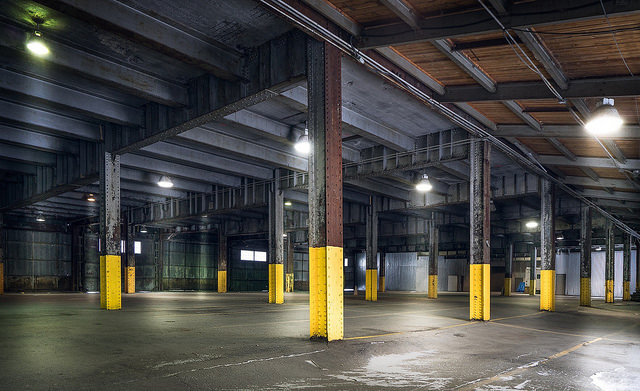This post has already been read 100772 times!
Note: This post was written by Wendy Johnson, Associate Consultant, Tompkins International.
Here at Tompkins, we often work in warehouse design. One of the most common errors in the design of warehousing facilities is to use the building cost criteria to define column spacings. With all of the considerations that go into designing a warehouse, column spacing may seem to be of little importance beyond ensuring the structural integrity of the building, but this is simply not the case. For optimal functionality the clear spacing between columns must be compatible with the storage system design.
Top two Challenges caused by improper column spacing:
- Poor space utilization. Generally, columns are spaced apart at 40 feet, 50 feet, or some other similar measurement. Architects and structural engineers habitually use these lengths in designing building configurations because steel mills generally produce structural members in these lengths. Often times, however, these dimensions result in a column line landing in a designated path of travel. Columns cannot be in an aisle and inhibit traffic flow, therefore racking must be relocated further apart in order to hide the column within either the flue or a bay of racking. Aisles that are wider than necessary wastes significant square footage. For example, if 60-foot column spacing is used instead of an optimal 54-foot, the space required would increase by a 10% for the same storage. Given the investment costs of a commercial building, this is not a trivial expense.
- Decreased storage locations. In order to avoid having columns landing within the path of travel, racking bays may have to be moved further apart-often times, moving racks several feet wider than is otherwise required. This means that the warehouse will not hold as many racks because more square footage is being taken up with aisle spacing. Further, often times, a column will be placed within a rack instead of in the flue. This means additional locations will be unusable because of the location of the column, which can result in a loss of upto 5% of storage capacity.
Determining optimal column spacing:
Finding the optimal column spacing for a warehouse is fairly straightforward. First you need to determine the depth of rack, flue spacing and aisle width. Once determining these factors, you can use this formula for a single selective storage system:

Example of ideal column spacing vs. standard column spacing:
54-foot column spacings allow a 10-foot aisle for 48-inch racking. This same configuration cannot be obtained in a building with 50-foot column spacing and causes a column to land in the path of travel. A building with 60-foot column spacing allows the same number of racking to be obtained at the 54-foot building; however it is inefficient as this used 12-foot aisles instead of 10-foot and therefore wastes otherwise useable square footage.
Other Considerations:
A typical 26-foot clear storage building will require 12-inch heavy wall pipe columns or 12 by 12-inch wide flange beam or box columns. If pallet racks are to be used and three sections of pallet racks are to be placed between each pair of columns, the clear space between the faces of the columns must be 292 inches, or 24 feet 4 inches. A four-unit bay would require 32 feet 4 inches. Placement of six double-pallet-width units requires a clear space of 49 feet 8 inches. Thus, in a typical warehouse design, a 33 by 51-foot center-to-center bay spacing with 1-inch columns would probably accommodate rack storage in either direction and provide optimum flexibility of layout with elimination of column loss.
So, it’s simple: when designing a warehouse, column spacing must be considered in order to achieve optimal functionality. For more information on this topic and others please reach out to us on LinkedIn, Twitter.
You might also like…

Recommended Posts
- Are Micro Fulfillment Centers the Next Frontier in Retail Logistics?
- Rethinking Defense Supply Chains with Network-Based Command Centers
- How to Use Predictive Analytics to Streamline Cross-Border Logistics
- AI Plus Humans for Resilient Freight Forwarding in a Complex World
- Modern Defense Supply Chains: The Essential Capabilities for Multi-Domain Operations
- Optionality: The Critical Supply Chain Imperative for 2024 - January 18, 2024
- The Death of the Supply Chain and Birth of the Digital Supply Network - January 26, 2021
- Yahoo Yard Sale: What is Verizon’s Play? - August 4, 2016
